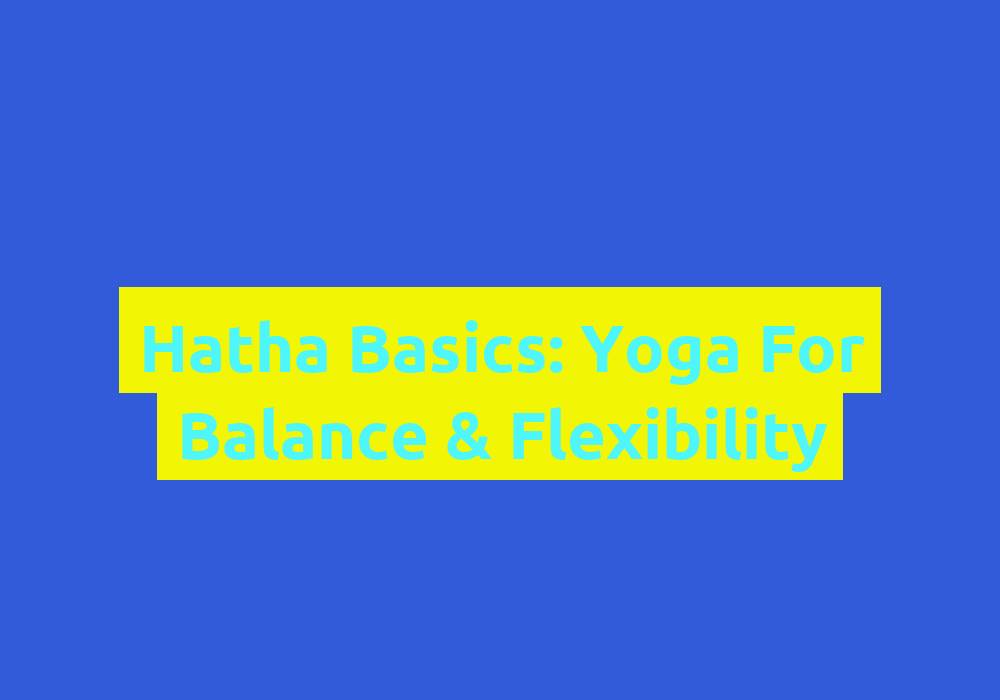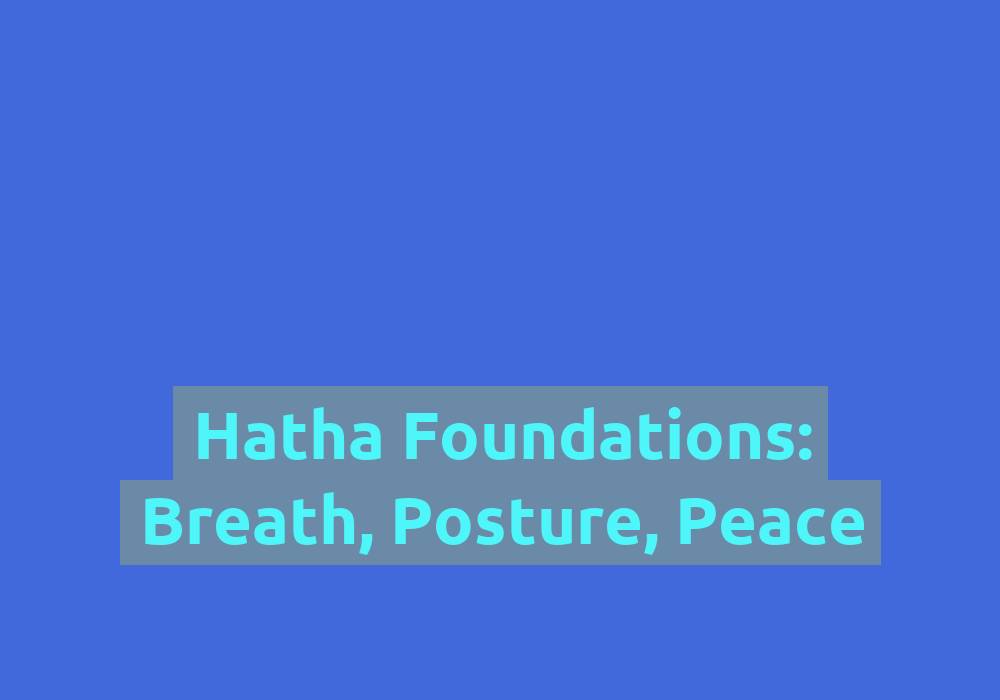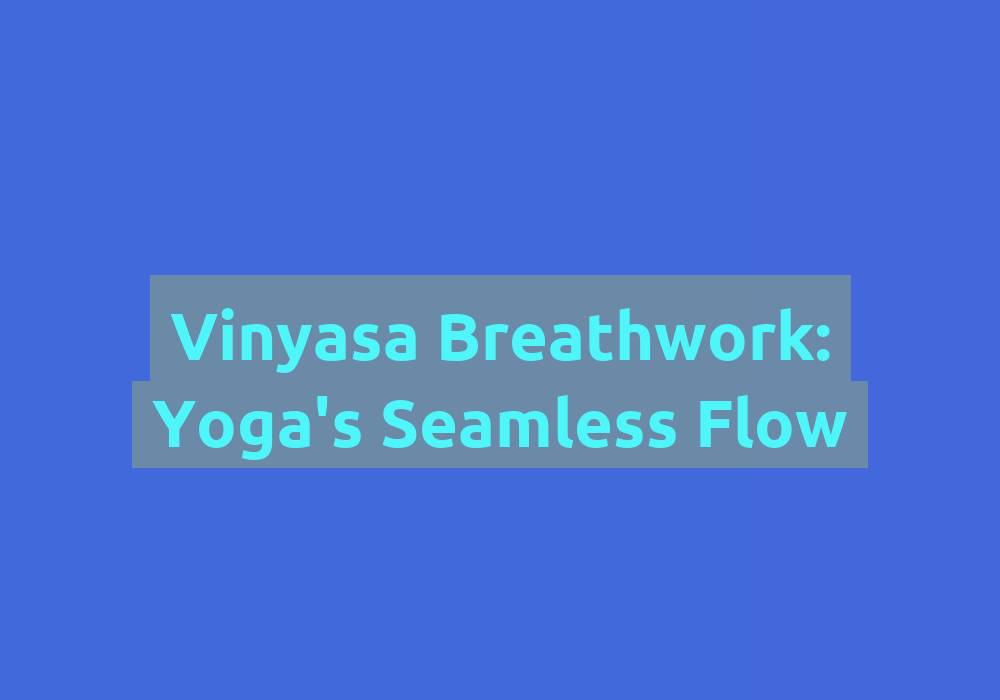Yoga Harmony: Flexibility and Balance through Asanas

Yoga is a practice that has gained global popularity due to its numerous physical, mental, and spiritual benefits. At the heart of yoga lies the practice of asanas, which are physical postures designed to promote flexibility and balance in the body. In this comprehensive article, we will delve into the concept of yoga harmony and explore how it can be achieved through regular practice of asanas.
Understanding Yoga Harmony
Yoga harmony goes beyond just physical balance; it encompasses a state of equilibrium and balance that extends to the mind and spirit. By focusing on the breath, body alignment, and mindful movement, yoga helps individuals find balance in their physical and mental well-being. It is a holistic approach that seeks to harmonize all aspects of our being.
Flexibility: The Key to Yoga Harmony
Flexibility plays a pivotal role in achieving yoga harmony. When we talk about flexibility in the context of yoga, it encompasses more than just being able to touch your toes or perform a split. Yoga flexibility refers to the ability to move freely and comfortably without any restrictions or limitations. It is about finding ease and fluidity in your movements, both on and off the mat.
Benefits of Flexibility in Yoga
Improved Range of Motion: Flexibility allows you to move your body through a wider range of motion, enhancing overall physical performance and reducing the risk of injuries. With increased flexibility, you can effortlessly flow through various yoga poses and embrace challenges with grace.
Enhanced Posture: Increased flexibility helps improve posture by aligning the spine and reducing any imbalances or misalignments. When the body is more flexible, it naturally adopts a better posture, resulting in improved spinal health and reduced strain on the muscles and joints.
Relief from Muscle Tension: Flexibility allows for better muscle lengthening, reducing muscle tension and promoting relaxation. Asanas that focus on stretching and opening tight muscles release built-up tension and create a sense of ease and lightness in the body.
Increased Blood Flow: Asanas that promote flexibility help improve blood circulation, ensuring that oxygen and nutrients reach all parts of the body. Enhanced blood flow not only nourishes the muscles and organs but also aids in the removal of waste products, promoting overall health and vitality.
Enhanced Mind-Body Connection: Flexibility in the body translates to flexibility in the mind, enabling a deeper connection between the two. When the body is flexible, it becomes easier to release tension and blockages, allowing for a more profound experience of mindfulness and inner harmony.
Asanas: The Path to Yoga Harmony
Asanas, or yoga poses, are the physical manifestations of yoga practice. They are designed to promote strength, flexibility, balance, and mindfulness. Regular practice of asanas not only enhances physical health but also calms the mind and uplifts the spirit. Let’s explore some popular asanas that can help you achieve yoga harmony:
1. Mountain Pose (Tadasana)
Tadasana serves as a foundational pose that helps improve posture, strengthen the legs, and cultivate balance. To practice Tadasana, stand tall with your feet together, grounding through the soles of your feet. Engage your core, lengthen your spine, and relax your shoulders. Take deep breaths, feeling the stability and balance radiating through your body.
2. Downward-Facing Dog (Adho Mukha Svanasana)
Downward-Facing Dog is a rejuvenating pose that improves flexibility in the hamstrings, calves, and shoulders. Begin on all fours, then lift your hips up and back, forming an inverted V-shape. Press your hands firmly into the mat, relax your neck, and push your heels towards the ground. Feel the stretch from fingertips to toes as you breathe deeply.
3. Tree Pose (Vrikshasana)
Tree Pose promotes balance, focus, and stability. Stand tall with your feet hip-width apart, shift your weight onto one foot, and place the sole of the other foot on the inner thigh or calf. Find a steady gaze point, engage your core, and lengthen your spine. Take deep breaths, feeling rooted like a tree while maintaining ease and stability.
4. Warrior II (Virabhadrasana II)
Warrior II strengthens the legs, opens the hips, and improves concentration. Begin in a lunge position, with one foot forward and the other foot back. Open your arms wide, parallel to the ground, and turn your head to gaze over the front hand. Sink into the lunge, feeling the strength and power emanating from the pose.
The Journey of Yoga Harmony
Yoga harmony is not something that can be achieved overnight; it is a continuous journey of self-discovery, self-care, and self-transformation. Here are some tips to enhance your journey towards yoga harmony:
Consistency: Regular practice is key to experiencing the full benefits of yoga. Dedicate a specific time each day to your practice, even if it’s just a few minutes. Consistency allows for progress and deepening of your yoga journey.
Listen to Your Body: Pay attention to your body’s signals and modify or skip poses that feel uncomfortable or painful. Yoga is about honoring and respecting your body’s limitations. By listening to your body, you can avoid injuries and create a safe and sustainable practice.
Breathe Mindfully: The breath is an integral part of yoga. Focus on deep, conscious breathing throughout your practice to enhance relaxation and promote mindfulness. Connect your breath with your movement, allowing it to guide you into a state of calm and centeredness.
Seek Guidance: If you are new to yoga or want to deepen your practice, consider seeking guidance from a knowledgeable yoga teacher who can provide proper alignment cues and personalized guidance. A qualified teacher can help you refine your practice and ensure that you are practicing in a way that is safe and beneficial for you.
Take Time for Self-Reflection: Yoga harmony extends beyond the mat. Take moments to reflect on your thoughts, emotions, and actions, cultivating self-awareness and self-compassion. Use your yoga practice as a tool for self-inquiry and personal growth, allowing it to positively influence your daily life.
Conclusion
Yoga harmony is the union of flexibility and balance achieved through the practice of asanas. By embracing the physical postures of yoga, we can not only enhance our flexibility but also cultivate balance in our bodies, minds, and spirits. Remember to approach your yoga practice with consistency, mindfulness, and self-care, and let the journey towards yoga harmony unfold naturally. Embrace the transformative power of yoga and embrace a harmonious life.
FAQ
1. What is yoga harmony?
Yoga harmony goes beyond physical balance and encompasses a state of equilibrium and balance that extends to the mind and spirit. It seeks to harmonize all aspects of our being through breath, body alignment, and mindful movement.
2. How does flexibility contribute to yoga harmony?
Flexibility plays a pivotal role in achieving yoga harmony. It allows for ease and fluidity in movements, both on and off the mat. Increased flexibility improves range of motion, enhances posture, relieves muscle tension, increases blood flow, and enhances the mind-body connection.
3. What are some popular asanas for achieving yoga harmony?
Some popular asanas for achieving yoga harmony include Mountain Pose (Tadasana) for posture improvement and balance, Downward-Facing Dog (Adho Mukha Svanasana) for flexibility, Tree Pose (Vrikshasana) for balance and stability, and Warrior II (Virabhadrasana II) for leg strength and concentration.
4. How can I enhance my journey towards yoga harmony?
To enhance your journey towards yoga harmony, it is important to practice consistently, listen to your body and modify poses accordingly, focus on mindful breathing, seek guidance from a knowledgeable teacher, and take time for self-reflection to cultivate self-awareness and personal growth.







